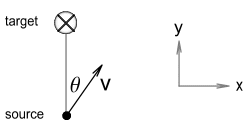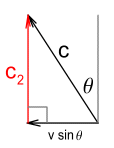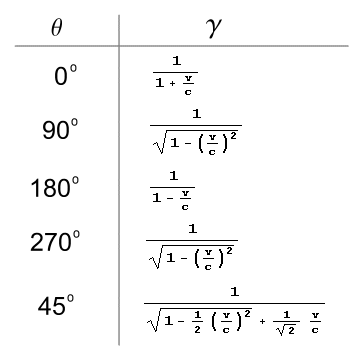What’s wrong with the
Lorentz Transform?
In the previous chapter we looked at how the Lorentz Transform (LT) was derived and how it
can be applied to calculate time differences. Could there be faults with this equation?
When deriving the LT, note that the light source was moving at right-angles, i.e. at
90-degrees, to the target. If you accept the Special Relativity (SR) premise that light
must always appear to be moving at the same speed for any observer, then the LT is
perfectly valid for this situation. But problems arise when the source velocity is not
aligned with the LT derivation.
In all manner of physics texts that discuss SR, the LT appears to be readily applied to
situations that don’t fit the LT assumptions. For example when a charged particle is
accelerated in a vacuum tube, the force applied to the particle is in the same direction
of the particle’s movement. This is a one-dimensional situation, yet the LT, which is
based on a two-dimensional perpendicular force, is used to determine the SR effects on the
particle.
Such blind application of a specific-situation formula to all situations may yield invalid
results. Here I will attempt to derive more appropriate LTs for various situations as well
as a general formula.
One dimensional situation
Let’s do another derivation for LT, but this time the light source
will be moving directly away from the target. See diagram.

The source projects a beam at the target with velocity c
while moving away from the target with velocity v. Let c2
be the velocity at which the light hits its target. Deriving the LT for this situation
gives:

It looks similar to the original LT equation but without the squaring. It
also has the same requirement that the velocity must always be less than c
otherwise it will not reach the target, i.e.:

Now we will do the derivation again, but this time the source will be
moving towards the target with velocity v. See diagram.

Deriving the LT gives:

As expected it’s the same equation; only the sign on v
has become positive. In this case the time-sensation at the target must speed-up relative
to the source in order for the light to appear the same speed. But an interesting
difference to note is that there is no requirement that velocity be less than that of
light, i.e.:

This is because, no matter how fast the velocity, the time-sensation at
the target could theoretically always be fast enough to make the resulting light speed c2
appear the same as c.
A General Lorentz Transformation Equation
Now that we’ve shown that the LT may need to vary depending on the
direction of movement of the source, let’s derive an equation that should hold true
for any direction of velocity. See below diagram.

Here the source is moving at velocity v and at an angle θ away from its target. In order for the
light to hit the target we need to angle the beam to compensate for the component of
velocity along the x-axes. Let vx and vy
be the velocity along the x and y axes respectively. We
calculate them to be:

Now to tilt the beam backward along the x-axes; we show
the velocity components are:

Where c2 is the velocity that the light hits
its target. Trigonometry and pythagoras reveal:

So the LT will be:


The above equation gives a general result for any source velocity v at any
angle θ away from the
target. Let’s look at a few special cases for different values of θ.

From the above table we see that when θ is 90 or 270 degrees (right-angles),
we get the conventional form of the LT. When θ
is 0 or 180 degrees, we get those equations given by the one-dimensional derivations
above. When θ is 45
degrees, we get a more complex formula that doesn’t fit with conventional SR theory.
Limitations:
This General LT equation has some limitations. Namely, the velocity along the y-axes
cannot exceed the speed of light in the opposite direction and the velocity along the x-axes
cannot exceed the speed of light in either direction:

and

Conclusion
Which LT is correct? Does the conventional LT apply to all situations or
should a more general form, which takes the angle of approach into account, be used for
non-perpendicular motion?
It would seem that the general form of the LT given here should be more appropriate.
However I have reason to believe that this may also be wrong. I will discuss in a later
chapter what a more reasonable solution might be. |